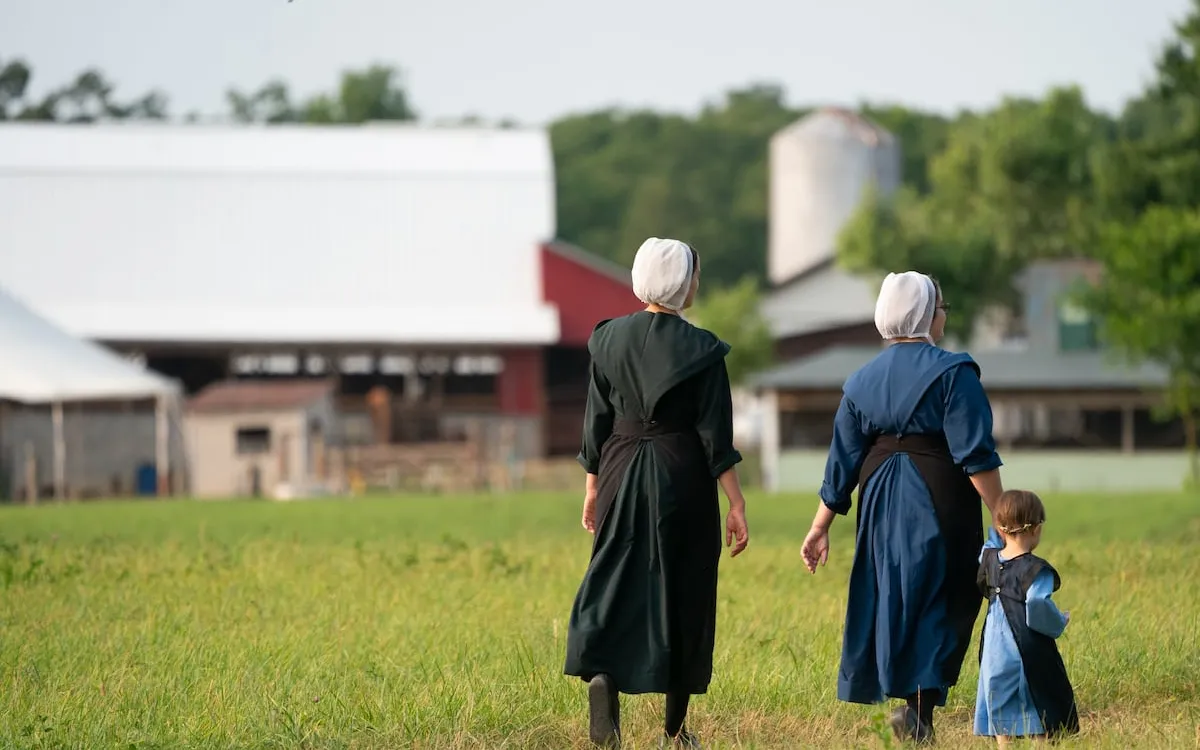
According to Carole Ober, chair of human genetics at the University of Chicago, the prevalence of asthma among children in the United States stands at about 8 to 10 percent. In stark contrast, the rate among Amish children is significantly lower, estimated to be between 1 to 2 percent. This discrepancy has prompted researchers to delve into the unique characteristics of Amish and other traditional farming communities, aiming to uncover protective treatments that could benefit young children.
For instance, researchers are exploring the potential of a probiotic or essential oil containing components found in farm dust. These substances, including beneficial microbes and their produced molecules, may stimulate children's immune systems, potentially preventing allergic diseases. Donata Vercelli, a professor of cellular and molecular medicine at the University of Arizona, notes, “Certain kinds of farming practices, particularly the very traditional ones, have this extraordinary protective effect.” This suggests that in these communities, conditions like asthma and allergies are virtually nonexistent.
The Amish community is a group of Christians who adhere to traditional farming methods, often living on single-family dairy farms and utilizing horses for tasks like fieldwork and transportation. As of 2024, approximately 395,000 Amish individuals reside in the United States, with the majority concentrated in states such as Pennsylvania, Ohio, and Indiana.
The past century has witnessed a significant rise in the incidence of allergic diseases, including hay fever, asthma, food allergies, and eczema. Hay fever was first identified as an allergic disease in the early 1800s and reached epidemic levels by 1900 in both Europe and North America. The prevalence of pediatric asthma saw a dramatic increase during the 1960s, and since the 1990s, the developed world has also experienced a surge in food allergies, including allergies to cow’s milk, peanuts, and eggs. Factors such as urbanization, air pollution, dietary changes, and an indoor lifestyle are frequently cited as contributing causes.
The hygiene hypothesis, initially proposed in 1989 by American immunologist David Strachan, suggests that early childhood exposure to microbes is crucial for developing a healthy immune system and may protect against allergic diseases. Strachan’s study indicated that children born into larger families were less likely to develop conditions like hay fever and eczema, leading him to hypothesize that interactions with older siblings could provide protective benefits against allergies.
Further research has supported the hygiene hypothesis, showing that children who grow up with pets are less likely to develop asthma, hay fever, or eczema. However, the most significant protective factor appears to be a childhood spent on a farm. Studies conducted on agricultural populations worldwide have confirmed this “farm effect,” with the strongest benefits noted in Amish communities.
In a study involving 60 schoolchildren, Ober, Vercelli, and their colleagues found that the prevalence of asthma among Amish children was four times lower compared to the Hutterites—another U.S. farming community with similar genetic backgrounds and lifestyles. The rate of allergic sensitization—the development of antibodies to allergens—was six times higher in Hutterite children.
After ruling out genetic differences, researchers identified exposure to farm animals and barns as a key distinction between the two groups. While Hutterite children and pregnant mothers typically avoid animal barns until children are around 12 years old, Amish children frequently interact with farm animals from a very young age. Analysis of house dust revealed that microbial load was nearly seven times higher in Amish homes than in Hutterite homes, suggesting a rich exposure to beneficial microbes.
Further experiments indicated that mice exposed to Amish dust exhibited significantly fewer asthma-like symptoms when exposed to allergens, while those inhaling Hutterite dust did not show similar benefits. Ober and Vercelli are currently working to identify the protective agents present in Amish dust that may help prevent allergic asthma. Their analysis has discovered proteins that function like delivery trucks, transporting microbial and plant-produced molecules to the mucus lining the respiratory tract, fostering a protective environment that can regulate airway responses and inhibit inflammation.
According to Kirsi Järvinen-Seppo, director of the Center for Food Allergy at the University of Rochester Medical Center, the focus has shifted from the hygiene hypothesis to a more microbial-centered understanding. Beneficial bacteria that colonize the gut and mucosal surfaces play a crucial role in shaping a child’s immune system. During the first two years of life, a baby’s immune system is highly adaptable to environmental stimuli, including beneficial bacteria, which may help reduce the risk of developing allergic diseases later on.
In a 2021 study, Järvinen-Seppo and her colleagues compared the gut microbiomes of 65 Old Order Mennonite infants from rural New York with 39 infants from urban areas. Much like the Amish, the Old Order Mennonites maintain a traditional agrarian lifestyle. Remarkably, almost three-fourths of Mennonite infants were colonized with Bifidobacterium infantis, a bacterium associated with lower rates of allergic diseases, compared to just 21 percent of urban infants.
These findings highlight the parallels between microbial colonization rates in traditional farming communities and those in developing countries, reflecting similar trends in autoimmune and allergic disease prevalence. Understanding the origins of the farm effect is crucial for developing strategies to prevent allergic diseases, which impact millions globally and diminish quality of life.
As Vercelli notes, while it may not be feasible to provide every family with a cow, the insights gained from these stable environments can inform the creation of protective strategies aimed at reducing allergic disease risk. “Once we know what substances and exposures are needed, I don’t think there will be any impediment to creating protective strategies along these lines,” she stated.